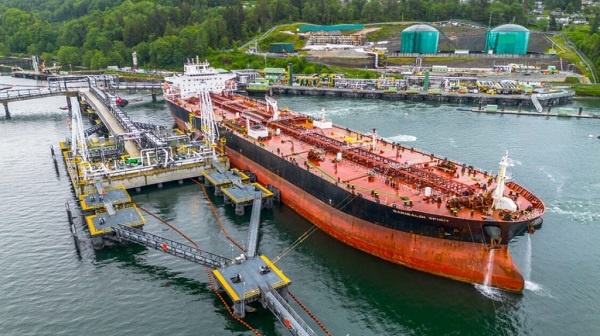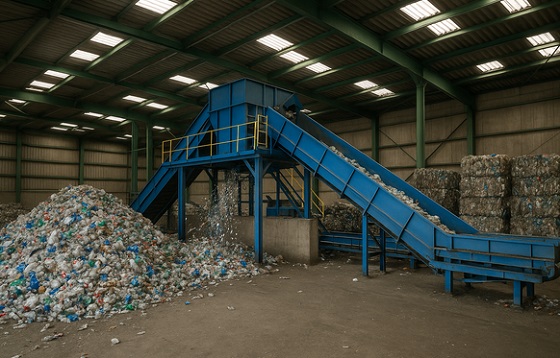Alberta
Getting to know… AMPIA

What is AMPIA?
Alberta Media Production Industries Association (AMPIA) is a vibrant non-profit, member-driven association that leads, builds and promotes Alberta’s screen-based production industry.
When/how/why was it formed?
AMPIA was the first film and television Industry Association in English-speaking Canada. It was formed in 1973 by a small but energetic group of industry professionals in order to represent their common interests and to advocate for and promote the Alberta Film & Television Industries. The primary method of promoting the achievements of the Industry is through the Alberta Film and Television Awards, which just celebrated their 45th Anniversary, making them the longest-running film and TV Awards show in English Canada.
How does it support Media production in the province?
The mandate of the Alberta Media Production Industries Association (AMPIA) is to promote and support the growth of screen-based production within Alberta. This is accomplished by providing services in Communications, Professional Development, Marketing, Membership Benefits and Advocacy to all levels of Government and regulatory bodies such as the CRTC.
How many members are there in the association?
AMPIA has approximately 200 individual members as well as member companies, representing over 2,000 industry professionals — a cross-section that includes producers, directors, screenwriters, performers, craftspeople, distributors, exhibitors, broadcasters, digital and web-based content creators and students engaged in film and media studies.
How large is Alberta’s Media Production Industry?
Volume of production in Alberta in 2017-18 was $308 Million, making it the fourth largest in Canada after BC, Ontario and Quebec.
How has the industry changed in the past 10 years?
The major change in the Industry is the rise of OTTs (Over the Top) distribution platforms such as Netflix, Hulu and Amazon Prime. These platforms operate in the Canadian market and yet make no contribution to Canadian content through the Canada Media Fund. Nor do they make any contribution to the Canadian economy, as they don’t pay taxes in Canada. As the traditional Broadcasters face increasing competition for advertising revenue, the amount of funding available for Canadian producers is shrinking rapidly.
What is your greatest opportunity to make a positive impact and what does that look like?
Alberta’s production was just over $300 Million and supported approximately 5,500 jobs in 2017-18, whereas next door in BC their volume of production was $3.8 Billion, with over 75,000 people working in production and post-production. Our greatest opportunity would be to level the playing field between Alberta and other jurisdictions in North America, which will lead to growth in jobs and economic impact in our Province.
What is the greatest threat to the industry in Alberta?
The lack of a competitive incentive. Most jurisdictions in North America use a tax rebate system, as opposed to the grant system used in Alberta. The grant system is beneficial in that it is faster and easier to administer than a tax rebate; however, the problem is the Fund is capped at $7.5M per project, making large-scale productions unfeasible. A tax rebate system has no cap.




Alberta
Alberta’s move to ‘activity-based funding’ will improve health care despite naysayer claims

From the Fraser Institute
After the Smith government recently announced its shift to a new approach for funding hospitals, known as “activity-based funding” (ABF), defenders of the status quo in Alberta were quick to argue ABF will not improve health care in the province. Their claims are simply incorrect. In reality, based on the experiences of other better-performing universal health-care systems, ABF will help reduce wait times for Alberta patients and provide better value-for-money for taxpayers.
First, it’s important to understand Alberta is not breaking new ground with this approach. Other developed countries shifted to the ABF model starting in the early 1990s.
Indeed, after years of paying their hospitals a lump-sum annual budget for surgical care (like Alberta currently), other countries with universal health care recognized this form of payment encouraged hospitals to deliver fewer services by turning each patient into a cost to be minimized. The shift to ABF, which compensates hospitals for the actual services they provide, flips the script—hospitals in these countries now see patients as a source of revenue.
In fact, in many universal health-care countries, these reforms began so long ago that some are now on their second or even third generation of ABF, incorporating further innovations to encourage an even greater focus on quality.
For example, in Sweden in the early 1990s, counties that embraced ABF enjoyed a potential cost savings of 13 per cent over non-reforming counties that stuck with budgets. In Stockholm, one study measured an 11 per cent increase in hospital activity overall alongside a 1 per cent decrease in costs following the introduction of ABF. Moreover, according to the study, ABF did not reduce access for older patients or patients with more complex conditions. In England, the shift to ABF in the early to mid-2000s helped increase hospital activity and reduce the cost of care per patient, also without negatively affecting quality of care.
Multi-national studies on the shift to ABF have repeatedly shown increases in the volume of care provided, reduced costs per admission, and (perhaps most importantly for Albertans) shorter wait times. Studies have also shown ABF may lead to improved quality and access to advanced medical technology for patients.
Clearly, the naysayers who claim that ABF is some sort of new or untested reform, or that Albertans are heading down an unknown path with unmanageable and unexpected risks, are at the very least uninformed.
And what of those theoretical drawbacks?
Some critics claim that ABF may encourage faster discharges of patients to reduce costs. But they fail to note this theoretical drawback also exists under the current system where discharging higher-cost patients earlier can reduce the drain on hospital budgets. And crucially, other countries have implemented policies to prevent these types of theoretical drawbacks under ABF, which can inform Alberta’s approach from the start.
Critics also argue that competition between private clinics, or even between clinics and hospitals, is somehow a bad thing. But all of the developed world’s top performing universal health-care systems, with the best outcomes and shortest wait times, include a blend of both public and private care. No one has done it with the naysayers’ fixation on government provision.
And finally, some critics claim that, under ABF, private clinics will simply focus on less-complex procedures for less-complex patients to achieve greater profit, leaving public hospitals to perform more complex and thus costly surgeries. But in fact, private clinics alleviate pressure on the public system, allowing hospitals to dedicate their sophisticated resources to complex cases. To be sure, the government must ensure that complex procedures—no matter where they are performed—must always receive appropriate levels of funding and similarly that less-complex procedures are also appropriately funded. But again, the vast and lengthy experience with ABF in other universal health-care countries can help inform Alberta’s approach, which could then serve as an example for other provinces.
Alberta’s health-care system simply does not deliver for patients, with its painfully long wait times and poor access to physicians and services—despite its massive price tag. With its planned shift to activity-based funding, the province has embarked on a path to better health care, despite any false claims from the naysayers. Now it’s crucial for the Smith government to learn from the experiences of others and get this critical reform right.
2025 Federal Election
Group that added dozens of names to ballot in Poilievre’s riding plans to do it again

From LifeSiteNews
The ‘Longest Ballot Committee’ is looking to run hundreds of protest candidates against Conservative leader Pierre Poilievre in an upcoming by-election in the Alberta.
A group called the “Longest Ballot Committee” is looking to run hundreds of protest candidates against Conservative Party leader Pierre Poilievre in an upcoming by-election in the Alberta Battle River–Crowfoot riding, just like they did in his former Ottawa-area Carelton riding in last week’s election.
The Longest Ballot Committee is a grassroots group that packs ridings with protest candidates and is looking to place 200 names in the Battle River–Crowfoot riding. The riding was won by Conservative-elect MP Damien Kurek who garnered over 80 percent of the vote, but has since said he is going to vacate his seat to allow Poilievre to run a by-election and reclaim his seat in Parliament in a Conservative-safe area.
In an email to its followers, the committee said “dozens and dozens” of volunteers are ready to sign up as candidates for the yet-to-be-called by-election. The initiative follows after the group did the same thing in Poilievre’s former Carelton riding which he lost last Monday, and which saw voters being given an extremely long ballot with 90 candidates.
The group asked people who want to run to send them their legal name and information by May 12, adding that if about 200 people sign up they will “make a long ballot happen.”
-

 Business2 days ago
Business2 days agoCarney pivots from anti American campaign, embracing US and hailing Trump as “transformational president”
-

 Business2 days ago
Business2 days agoReality check—Canadians are not getting an income tax cut
-

 Daily Caller2 days ago
Daily Caller2 days agoMisguided Climate Policies Create ‘Real Energy Emergency’ And Permit China To Dominate US
-

 International1 day ago
International1 day agoIce Surprises – Arctic and Antarctic Ice Sheets Are Stabilizing and Growing
-

 Alberta1 day ago
Alberta1 day agoEnergy projects occupy less than three per cent of Alberta’s oil sands region, report says
-

 Alberta2 days ago
Alberta2 days agoBonnyville RCMP targeted by suspect driving a trackhoe – Update
-

 Energy1 day ago
Energy1 day agoCarney’s energy superpower rhetoric falls flat without policy certainty
-

 Energy1 day ago
Energy1 day agoOil tankers in Vancouver are loading plenty, but they can load even more







